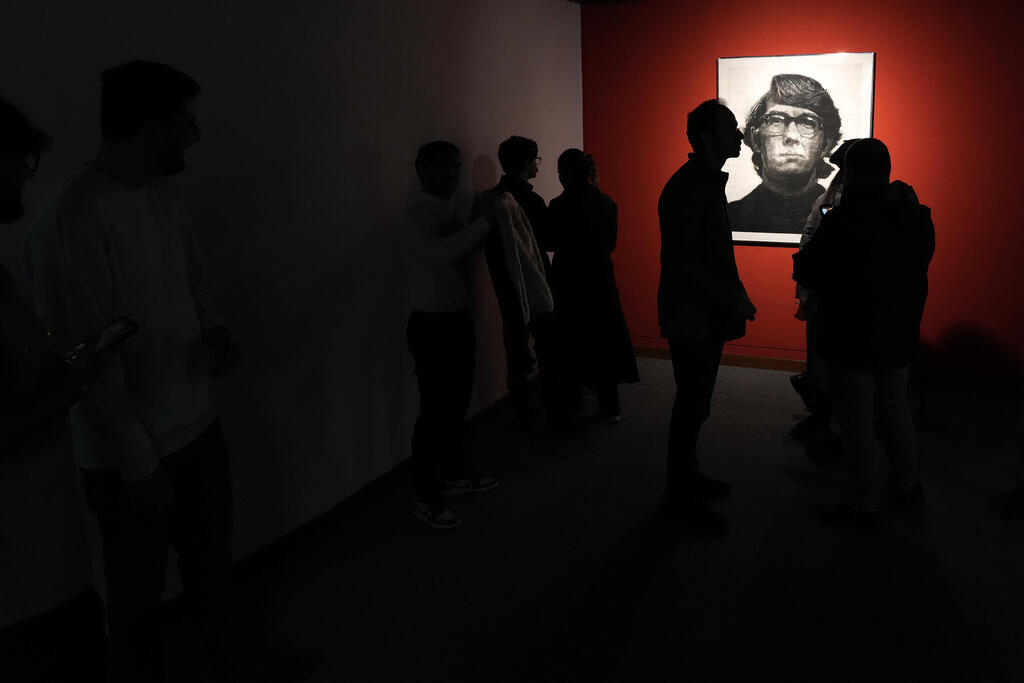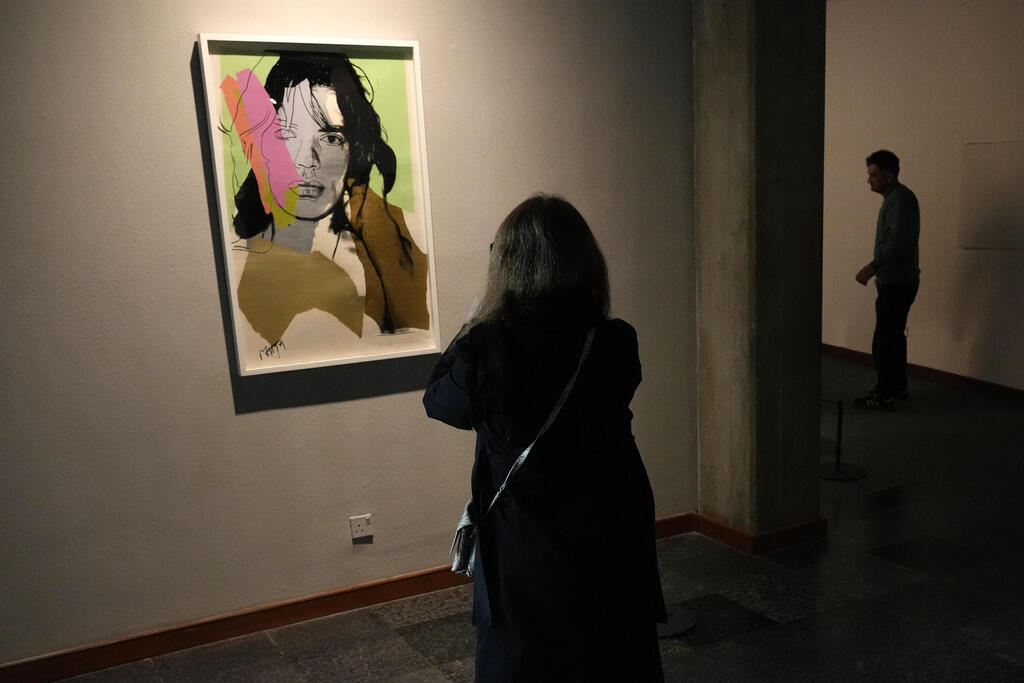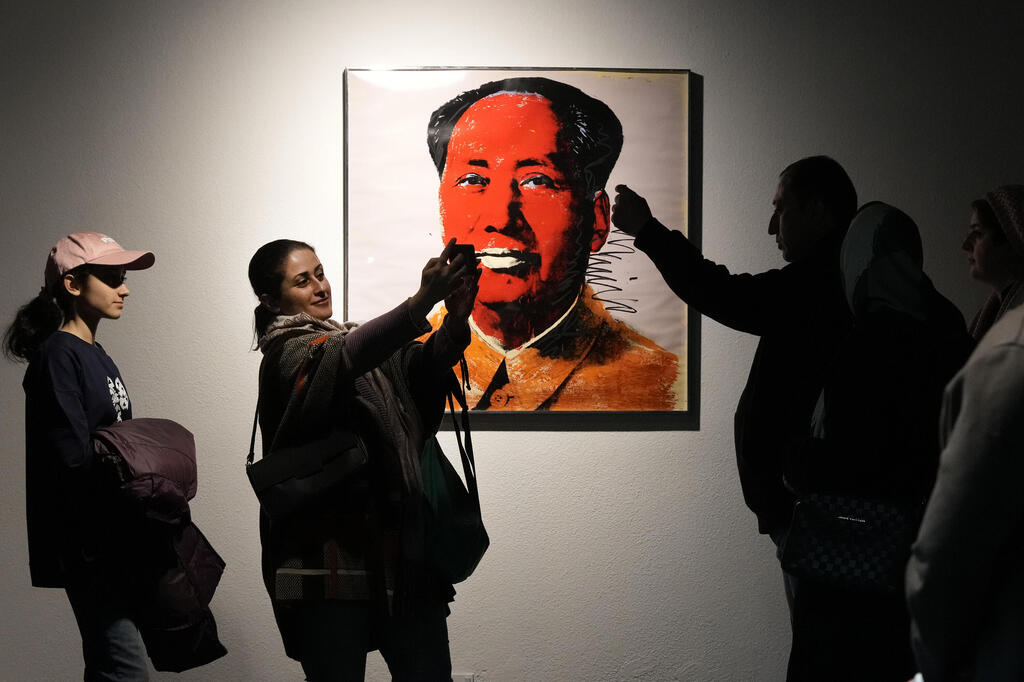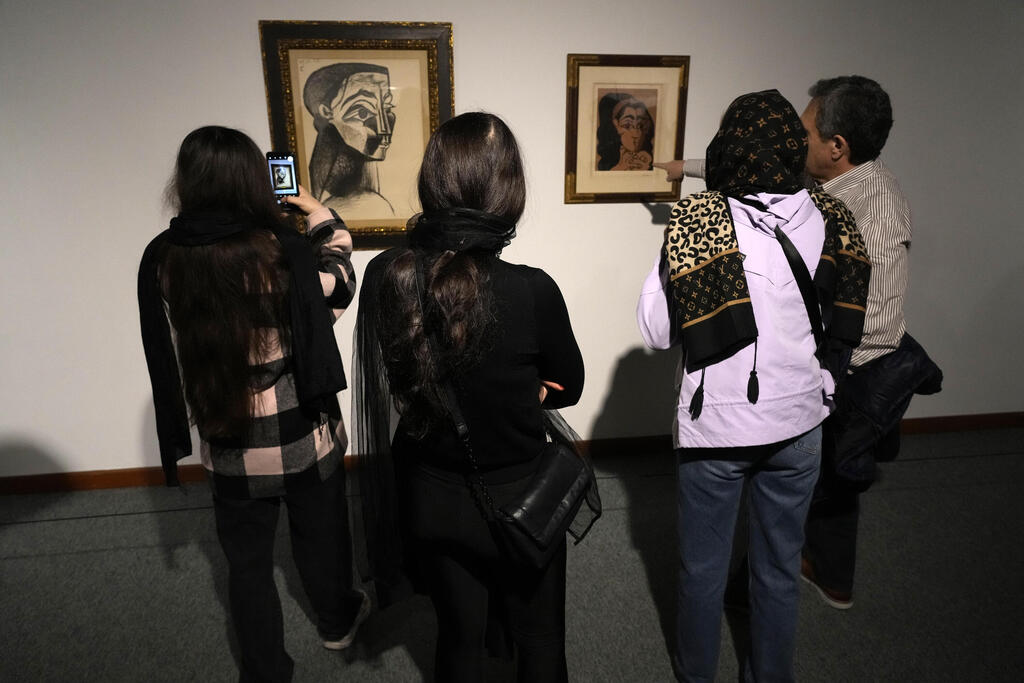Getting your Trinity Audio player ready...
As Iran faces increasing tensions with the West and turmoil at home, a new exhibition at the Tehran Museum of Contemporary Art is displaying Western artwork including pieces not seen by the public in at least a decade.
The unveiling of the exhibition “Eye to Eye” has drawn numerous women, their hair uncovered, to the underground galleries of the museum in Tehran’s Laleh Park. Their presence, while unacknowledged by authorities, shows the way life has changed inside Iran just in the last few years even as the country’s theocracy presses forward with enriching uranium to near-weapons grade levels and launching attacks on Israel during the ongoing Mideast wars.
“The first feeling that came to me, and I told my parents, was that I can’t believe I’m seeing these works, which have always been kept far from our eyes,” said Aida Zarrin, a young woman at the museum. “If such events are held here and we can see artworks like the rest of the world, it’s enough. They are really precious.”
4 View gallery


Iranians visit artwork by American artist Chuck Close at the Eye to Eye exhibition
(Vahid Salemi / AP)
4 View gallery


Iranians visit artworks by the Spanish artist Pablo Picasso at the Eye to Eye exhibition
(Vahid Salemi / AP)
4 View gallery


Iranians visit Mao Zedong painting by Andy Warhol at the Eye to Eye exhibition
(Photo: Vahid Salemi / AP)
4 View gallery


Iranians visit portrait of Rolling Stones Mick Jagger by Andy Warhol at the Eye to Eye exhibition
(Vahid Salemi / AP)
The government of Iran’s Western-backed shah, Mohammad Reza Pahlavi, and his wife, the former Empress Farah Pahlavi, built the museum and acquired the vast collection in the late 1970s, when oil boomed and Western economies stagnated. Upon opening, it showed sensational works by Pablo Picasso, Mark Rothko, Claude Monet, Jackson Pollock and other heavyweights, enhancing Iran’s cultural standing on the world stage.
But just two years later, in 1979, Shiite clerics ousted the shah and packed away the art in the museum’s vault. Some paintings — cubist, surrealist, impressionist and even pop art — sat untouched for decades to avoid offending Islamic values and the appearance of catering to Western sensibilities. Nearly everything is believed still to be there, though an Andy Warhol print of the empress was slashed during the revolution.
Today, the collection is likely worth billions of dollars. Even with Iran now cash-strapped under Western sanctions, officials with the museum have been able to advocate for keeping the collection, though there have been occasional trades in the past for items from Persian history. Those sanctions may increase under the next administration of U.S. President-elect Donald Trump.
As Iranian politics have thawed, re-frozen and thawed again, the collection resurfaces along with those changes.
Among the over 120 works being shown are ones from Picasso, Andy Warhol and Francis Bacon, along with celebrated Iranian artists. One of the Warhols, “Jacqueline Kennedy II,” is a silkscreen double image of the former U.S. first lady in mourning after the 1963 assassination of her husband, President John Kennedy. Another Warhol portrait of Rolling Stones frontman Mick Jagger also garnered attention from the cellphone photo snappers.
“A lot of these works are important works in the history of art, and that’s why this show distinguishes itself from others,” said Jamal Arabzadeh, the exhibition’s curator. ”A lot of people with less exposure to art have discovered the museum for the first time. ... We are seeing a part of the community that are discovering art and the museum and see the potential of this place, and this is something to be proud of.”
The presence of Western art comes as Iran’s government has long fought against items like Barbie dolls and depictions of cartoon characters from “The Simpsons.” Such Western influences have been deemed un-Islamic in the past and have been seen as part of a “soft” cultural war against the Islamic Republic.
With a ticket costing the equivalent of 14 U.S. cents, the exhibition offers a rare government-sanctioned event not involving the country’s politics or Shiite religion.
Among the visitors were many women defying the country’s mandatory headscarf, or hijab, law. Crackdowns over the hijab have slowed down after Iran’s presidential election in July that elected reformist President Masoud Pezeshkian, though individual cases of arrest continue to draw anger.
Get the Ynetnews app on your smartphone: Google Play: https://bit.ly/4eJ37pE | Apple App Store: https://bit.ly/3ZL7iNv
And for many, the cost of tickets to travel abroad given Iran’s collapsing rial currency keep foreign museums out of reach.
“This is very attractive for art enthusiasts because not everyone can go and see museums abroad. It’s extremely exciting to see the works here,” said a woman who only gave her last name, Dolatshahi. “I had no idea I could see works by van Gogh and Picasso here.”

